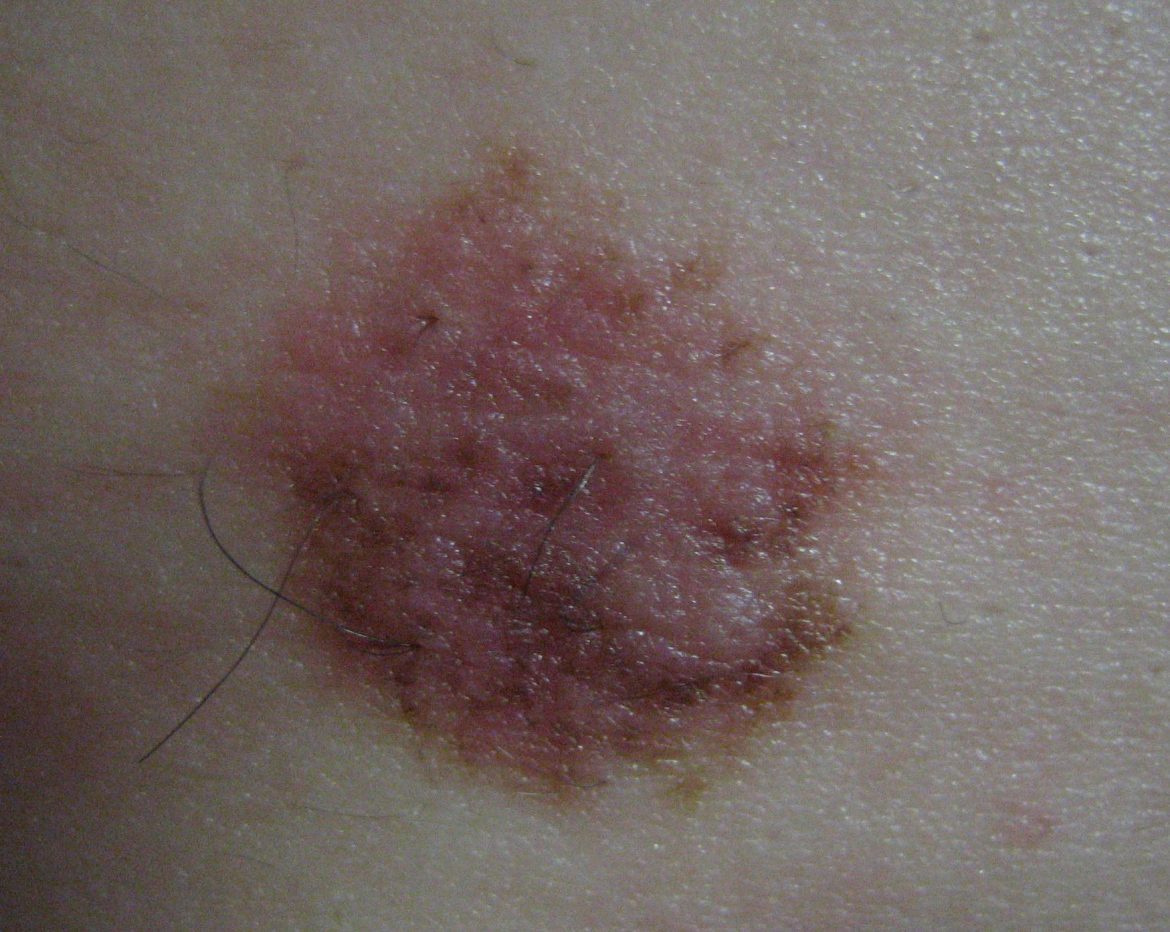Moles (or, technically speaking, melanocytic nevi) most often appear throughout life. However, they can also be present at birth or appear in the first few weeks of life (1-3% of newborns). In these cases, they are called congenital melanocytic nevi and must be differentiated by a dermatologist from other types of spots that may also be present at birth.

Traditionally, considerable importance has been attached to this type of mole, due to the potential risk of it becoming malignant (i.e., melanoma). Today, we have more data on this subject.
The risk of malignancy is greater the larger the congenital nevus, which is why it is important to classify these types of moles into three categories:
- small: less than 1.5 cm
- medium: 1.5 cm-20 cm
- large and giant: greater than 20 cm and 40 cm, respectively
Small and medium congenital nevi are relatively common, and we can say that they are “healthy skin.” The risk of them becoming malignant over time is considered to be very low (less than 1%) and, if it does occur, it would happen in adulthood. Given this evidence, it is important to remain calm about the mole; it is not essential to remove it, although we must not forget to protect it from the sun (just like the rest of the child’s skin!) and consult a dermatologist whenever we notice a change in color or size (see ABCDE rules). The option of removing it should be assessed according to its location, the parents’ wishes, and the aesthetic consequences of such removal.
Large congenital nevi are much less common. Traditionally, this type of nevus has been considered to have a higher risk of developing melanoma due to its size. With regard to treatment, the option is to monitor it or remove it. It is important to individualize the approach. Some nevi, if large, can be successfully operated on, thereby reducing the psychological consequences of having them throughout life, while others can leave such noticeable scars that treatment is not worthwhile from an aesthetic or functional point of view.

Giant congenital melanocytic nevi cover very large areas of the body (they can be shaped like a swimsuit, a T-shirt, etc.). Currently, dermatologists and surgeons who treat them agree that the risk of developing melanoma is not a sufficient reason to “insist” on removing the entire nevus “at all costs,” as this may involve complex surgical procedures or very noticeable sequelae for a child. In general, the approach to be taken should be decided jointly by the parents and the doctor, weighing the pros and cons of treatment. In any case, it is important to have frequent check-ups with your dermatologist for proper monitoring of the nevus.
